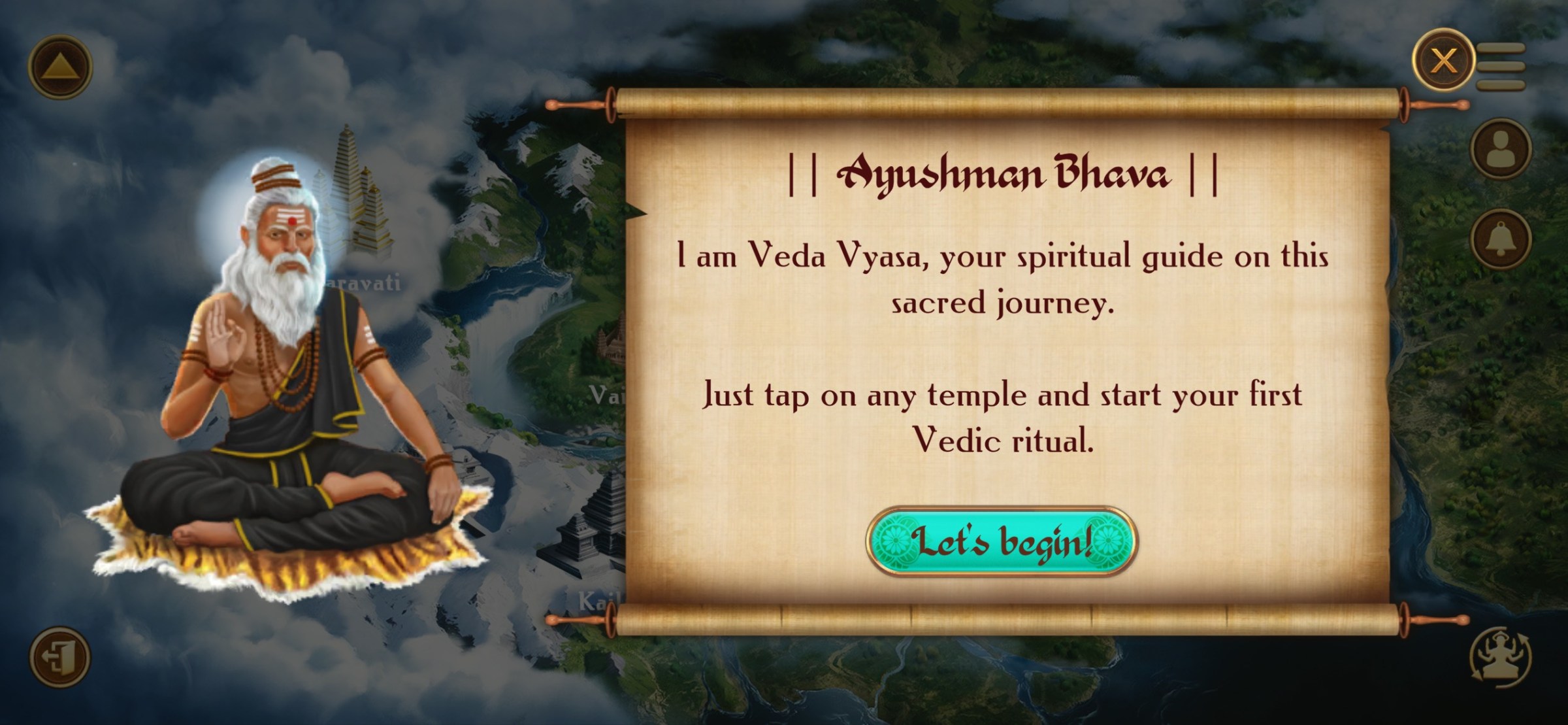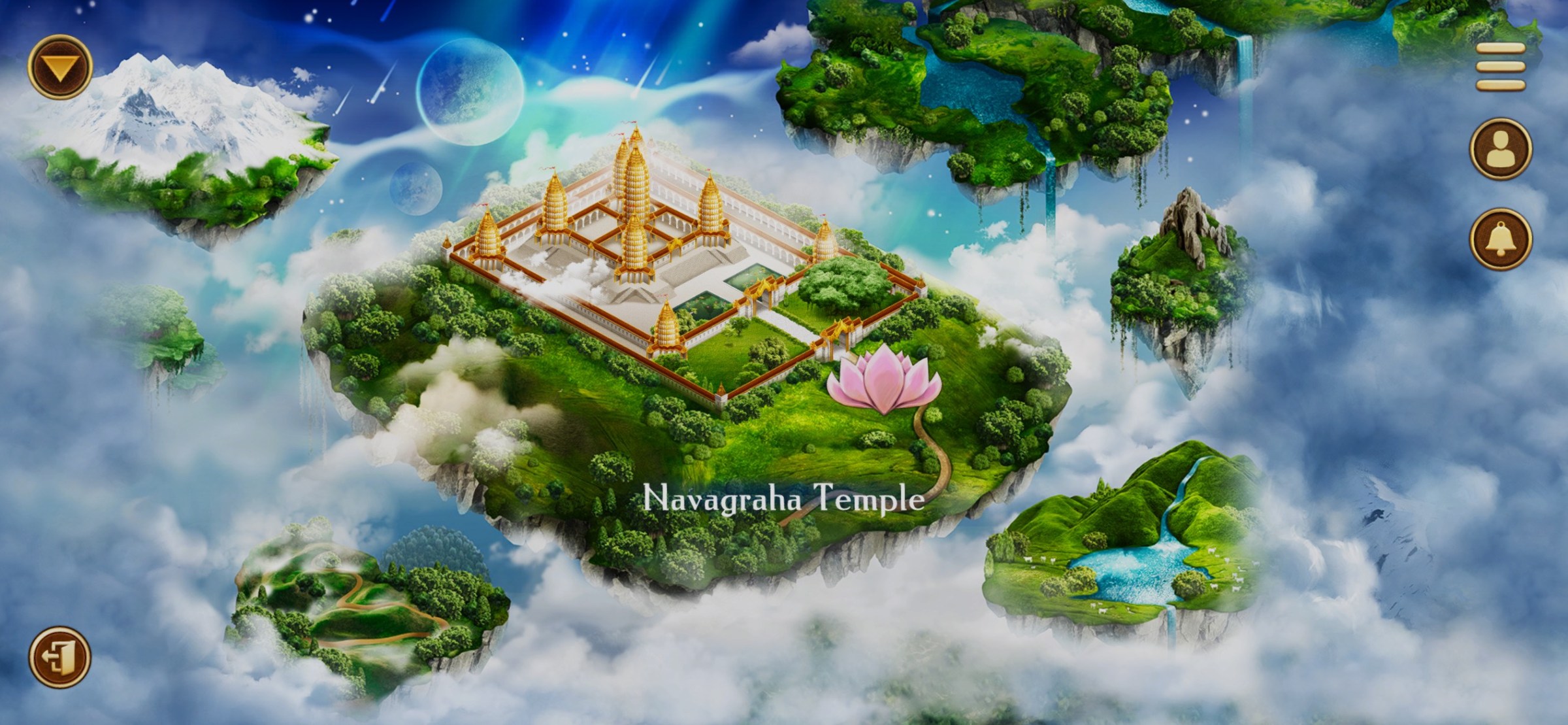When COVID-19 lockdowns swept across India in 2020, they brought religious life to a halt. Temples were shuttered, large gatherings banned, and in-person rituals suspended — many for the first time in living memory. Millions of devotees were suddenly cut off from their usual spiritual routines, from daily temple visits and bhajans (community singing sessions) to life-cycle ceremonies like weddings and last rites. In the north Indian city of Kanpur, Mohit Tiwari, a 35-year-old priest, began receiving calls from anxious devotees seeking ways to continue their spiritual practices at home. Without access to priests or temple services, many turned to phone calls and video links for guidance. That’s when the idea for his startup struck.
“I realized we could do everything virtually whether it is spiritual mantras, offerings or rituals, based on an individual’s name and gotra [ancestral lineage]. There was no need for physical presence,” said Tiwari, who then founded OnlinePujaBooking.com, a “spiritual tech” company offering a variety of traditional Hindu rituals that can be booked online and performed virtually via live video.
“The economy package, priced at ₹7,100 ($84), includes one priest and a three-day ritual — roughly equivalent to a week’s wages for a skilled urban worker in India.”
“Soon people started joining me in the livestream to participate in poojas [worship],” he said.
What began as a crisis workaround has since evolved into a full-fledged industry. Across India, a wave of spiritual tech platforms transform priests into livestream hosts, temple rituals into gamified 3D experiences, and mantras into AI-generated audio.
Over the last few years more than 950 faith tech startups have emerged in the country, almost exclusively focusing on Hinduism.
These platforms are reimagining centuries-old religious rituals for the smartphone era — and for urban millennials and Gen Z users who want their spirituality as personalized and frictionless as a shopping app.
Image: Tantra Sadhana app
“I or my parents hardly find time to visit a temple or manage all the arrangements for a puja, so performing it online is a more convenient option for us,” 24-year-old Mohit Sharma, a psychology student based in New Delhi, told The Verge.
Critics have raised concerns that the digital convenience may be encouraging superficial engagement rather than spiritual depth. They argue that by turning complex traditions into transactional services, apps risk promoting superstition or hollowing out centuries-old practices.
“Today’s youth want instant answers,” said Anil K. Rajvanshi, an academic and author who studies spirituality and technology. “But in spirituality, depth comes slowly. Technology gives you a chunk of knowledge, but extracting wisdom from it requires questioning and balance — and that’s missing.”
For Tiwari, the convenience of performing rituals online doesn’t dilute their meaning; instead, it offers a practical way to stay connected with faith amid daily demands. “Whether it is done online or in person, the puja is the same,” Tiwari said. “It is all based on the name and gotra. What matters is the intention — the sankalp.”
This model of virtual ritual has found a growing audience well beyond India’s borders. Tiwari’s team fields inquiries from both India and abroad, with nearly half of his monthly clients logging in from countries like the US, UK, and Australia.
Tiwari’s platform offers a range of packages to suit different needs and budgets of clients from “economy” options to “premium” services. For example, a popular marriage mantra that is “highly effective” for those facing delays or obstacles in finding a suitable life partner is available in three different tiers. The economy package, priced at ₹7,100 ($84), includes one priest and a three-day ritual — roughly equivalent to a week’s wages for a skilled urban worker in India. The premium package, priced at ₹51,000 ($605), provides a complete seven-day experience with five priests and an extensive 125,000 recitations of the mantra. That’s nearly the cost of two month’s rent for a two-bedroom apartment in many Indian metropolitan cities.
Yet the business is booming.

Image: Tantra Sadhana app
More Indians, especially urban millennials seek spiritual services online with platforms like Tiwari’s no longer being niche experiments. They are tapping into a vast, under-regulated faith economy where millions of rupees are already changing hands and the potential for profit is only growing.
“We get all kinds of requests regarding emotional healing, planetary imbalances, spiritual growth and career setbacks,” Tiwari said. “Everyone has a reason, and they don’t need to step into a temple anymore.”
Sacred screens and startup scripts
India’s religious tech sector has experienced a meteoric rise in the last half a decade especially after the COVID-19 pandemic. It is now drawing increased attention from investors, fueled by growing demand for digital religious services. Startups in the space raised more than $50 million in venture funding in 2024, up sharply from $4.3 million the previous year.
This rapid growth is rooted in a cultural landscape where ritualistic faith is deeply woven into daily life. Religious practices are integral to both personal and community routines. According to a 2021 Pew Research Center study, nearly 97 percent of Indian adults say religion is very important in their lives — one of the highest rates globally. This enduring devotion has created fertile ground for startups offering ways to integrate spirituality into digitally connected lifestyles.

Image: Sadhana app
Reflecting this momentum, the spiritual wellness app market in India is projected to reach $168.8 million by 2030, with a compound annual growth rate (CAGR) of 15.4 percent from 2024 to 2030. This expansion is mirrored by India’s broader religious and spiritual market, valued at approximately $58.56 billion in 2023.
“People are becoming more curious towards religion and spirituality but they have little time to do it physically so we are offering these services online,” said Vikram Shastri, COO of the Vedic Sadhana Foundation, which operates a series of spiritual digital platforms and websites.
The foundation runs a suite of apps, including the Sadhana app, which offers users a 3D environment to perform complex rituals like fire offerings or chanting, often with AI-assisted guidance. Their audience? Primarily 18 to 45-year-olds.
On screen, users navigate a temple-like virtual space where they can select offerings, light ritual fires and chant mantras, all guided by step-by-step audio and visual cues. The app’s built-in AI explains the meaning behind each action, helping users understand not just how to perform the ritual, but why it is done.
“We are not trying to replace tradition,” Shastri said. “We are trying to meet people where they are — on their phones.”
The Sadhana app has seen exceptional growth, with over 2.7 million rituals performed last year alone.
Buoyed by success, the platform also recently launched “Tantra Sadhana,” a gamified 3D experience that allows users to perform esoteric rituals that once required secluded forests or sacred spaces.
“Like, for example, there are practices where one would do rituals on top of a corpse or one would do in the middle of a jungle. One would actually offer, you know, parts of the body to the divine as visualization to indicate that surrender to the divine. So, these are very esoteric practices where one may not even know the steps of how to go about it,” Shastri said. “So, we have brought that forth in a 3D game-like setting where the character or the protagonist actually goes around in the forest, picks up the ingredients, and performs the ritual.”

Image: Sadhana app
Other offerings include Astro Sadhana for personalized astrological remedies and Vedavyasa AI, a spiritual chatbot designed to answer complex religious questions about mantras, scriptures or symbolic meanings behind rituals. For devotees seeking a more sacred interface, there’s even a custom-built “Vedic Android Tablet” — marketed as a digital altar. The altar comes preloaded with curated scriptures, bhajans and ritual tools, offering a dedicated sacred space for daily practice. Users can listen to devotional music, read religious texts, or follow along with guided rituals without distractions from other apps.
The goal, Shastri said, is to move beyond passive consumption and help users actively engage in spiritual practice even from a screen.
‘Commodification’ of sacred traditions
The interface of most of these “spiritual apps” blends soft ambient temple music with immersive visuals. Glowing oil lamps flicker as Sanskrit chants play in the background, while digital garlands sway gently from virtual shrines. The color palette evokes sacred spaces: deep reds, saffron golds, and earthen browns dominate the screen. As users move through rituals, the screen slowly pans across ornately designed idols and sanctum spaces, mimicking the slow, reverential pace of a real-life puja.
These are all shamanic responses to fear … many of these apps exploit that fear.”
Yet for all their innovation, some experts in the country argue these apps commodify sacred traditions, transforming faith into yet another subscription-based service.
“These are all shamanic responses to fear,” said Rajvanshi. “When people feel insecure, they seek a pillar of support — sometimes it is worship, sometimes it is astrology. But many of these apps exploit that fear.”
Rajvanshi warns that while technology can democratize access to information, it also risks flattening deeply philosophical traditions into transactional services. “Spirituality gives us wisdom,” he said. “But wisdom cannot be downloaded like an app. It comes from introspection, questioning, going deeper and not by quick fixes.”
Several apps walk a tightrope between devotion and digital consumerism. With AI-generated horoscopes, push notifications reminding users to pray, and leaderboards for devotional acts, the user journey increasingly mirrors that of fitness or finance apps.
Still, for millions of users, these platforms offer a sense of connection, comfort, and control particularly among diaspora populations who may be far from temples and community. “This is probably the only way to be rooted with our traditions in this fast-paced world,” Sharma said.
Ultimately, the digitization of faith is not just a technological shift, it is a cultural one. In a country where religion has long been communal, embodied, and centered around temple visits, festivals, and inherited rituals, the migration of rituals to screens may fundamentally reshape how belief is practiced, transmitted, and even understood.
In many traditions, even the physical act of reaching a temple, whether it meant climbing several hundred steps or traveling across states, was considered a form of penance and devotion. Today, instead of engaging deeply with scripture or spiritual questioning, many younger users seek instant solutions — for relationships, careers or emotional clarity — without the time or effort once associated with religious study.
“Spirituality is going through a UX redesign,” said Tiwari. “You don’t need to climb 300 steps to a temple anymore. You just need a phone.”
Read the full article here
